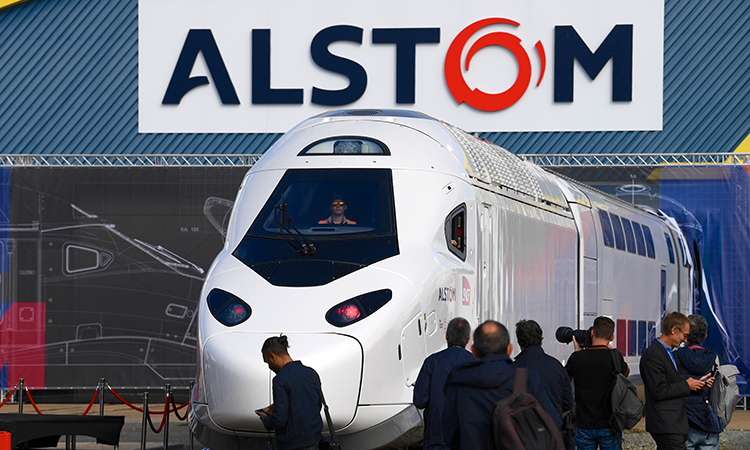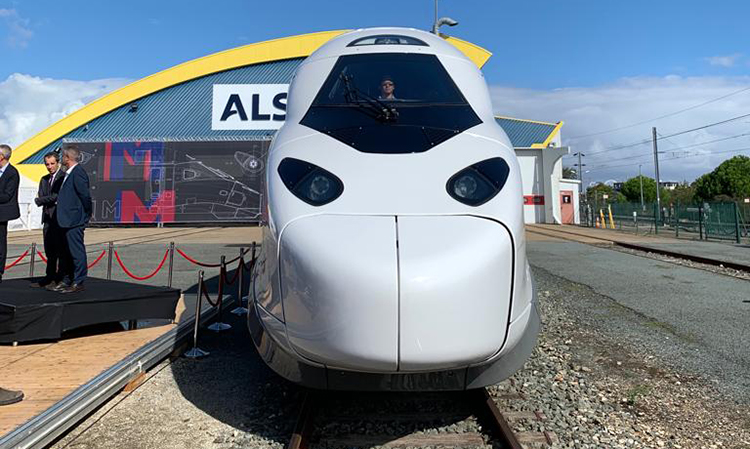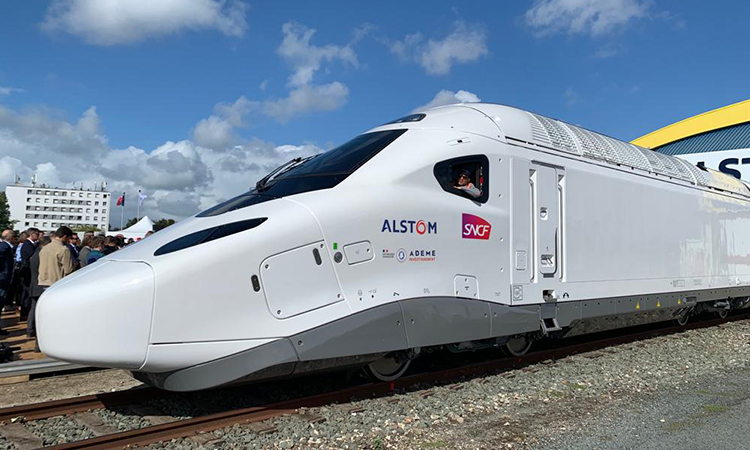TGV M unveiled by Alstom and SNCF
Posted: 12 September 2022 | Elliot Robinson (Editorial Assistant - Global Railway Review) | No comments yet
The TGV M, which is to run on French national network from 2024, has been unveiled by Alstom and SNCF at the La Rochelle workshop.


Copyright: Alstom/Olivier Schindler
Christophe Fanichet (Chairman and CEO of SNCF Voyageurs), Alain Krakovitch (Director of TGV-Intercités), Xavier Ouin (Industrial Director of SNCF Voyageurs) and Jean-Baptiste Eyméoud (President, Alstom France) have unveiled the production line of the TGV of the future in Alstom’s La Rochelle workshops, after an operation that brings together the power cars and passenger cars. A video of the unveiling can be found at the bottom of the page.
The TGV M, which has benefited from the know-how of the best experts at Alstom and the Rolling Stock and TGV-Intercités divisions of SNCF Voyageurs, will run on the French national network from 2024. An order has been placed for 115 units (100 domestic and 15 international) and the train will be used for both the INOUI and OUIGO TGV services.


Copyright: Alstom/Olivier Schindler
The TGV M offers:
- Unprecedented modularity, which makes it possible to adjust the number of cars as closely as possible to the market’s needs (seven, eight or nine), to quickly transform a 1st class space into a 2nd class space and vice versa, to reconfigure the interior by removing or adding seats, bicycle, or luggage spaces, etc.
- A 20 per cent increase in on-board space, i.e. a possible offer of up to 740 seats compared to the current maximum of 634.
- Ultra-competitive energy efficiency and carbon footprint per passenger: the TGV M’s carbon footprint is the lowest on the market and 97 per cent of the train’s components are recyclable. With a 32 per cent reduction in CO2 emissions, the TGV M is fully in line with the SNCF Group’s environmental commitments, as set out in the SNCF Voyageurs “Planète Voyages” programme, which aims to reduce the carbon footprint and energy consumption of all its activities.
- Access to evolving connected services that meet passengers’ needs, such as on-board Wi-Fi, as well as complete information in real time in the various areas of the train.
- A highly “communicating” train set whose sensors continuously transmit thousands of pieces of data enabling the train to be examined in real time from every angle to optimise maintenance and availability,
Related news you will enjoy:
Alstom to provide 10 Coradia Stream regional trains for FGC
Alstom to locally manufacture 12 new VLocity regional trains in Australia
The new features of the TGV M, as well as its technical specifications, are different from those of the current fleet, leading SNCF Voyageurs to deploy an operating programme involving all the Group’s players.
All TGV operating processes need to be modified, whether related to driving, traffic supervision, train preparation in stations, or to parking, depots and cleaning. This is linked, for example, to the fact that the TGV M will have nine passenger cars instead of eight like the current TGVs. Or to the fact that the majority of the interfaces in the driver’s cab have been digitalised.


Copyright: Alstom/Olivier Schindler
A detailed analysis of the compatibility of the TGV M with the network and stations is being carried out throughout France. It consists of ensuring that the new train is properly registered at all points on the network and in all stations. This analysis is used to identify the adaptation work that needs to be carried out, the procedures that need to be modified and the changes that need to be made in terms of passenger flow management. For example, the surveys already carried out in nearly 70 stations show the need to move stop signs to make it easier for drivers to see the signals when the trains are on the platform. This is linked to the nose of the TGV, which has been lengthened to make it more aerodynamic.
All the new features of the TGV M have been designed with and for future users, whether passengers or SNCF Voyageurs agents. The next major step will be the dynamic test phase at 200km/h in Velim (Czech Republic) by the end of 2022. This opens the first chapter in a long period of testing for this high-speed train.
A video of the TGV M unveiling is below.
Stay Connected with Global Railway Review — Subscribe for Free!
Get exclusive access to the latest rail industry insights from Global Railway Review — all tailored to your interests.
✅ Expert-Led Webinars – Gain insights from global industry leaders
✅ Weekly News & Reports – Rail project updates, thought leadership, and exclusive interviews
✅ Partner Innovations – Discover cutting-edge rail technologies
✅ Print/Digital Magazine – Enjoy two in-depth issues per year, packed with expert content
Choose the updates that matter most to you. Sign up now to stay informed, inspired, and connected — all for free!
Thank you for being part of our community. Let’s keep shaping the future of rail together!
Related topics
Operational Performance, Rolling Stock Orders/Developments, Sustainability/Decarbonisation
Related organisations
Related regions
Related people
Alain Krakovitch, Christophe Fanichet, Jean-Baptiste Eymeoud, Xavier Ouin







